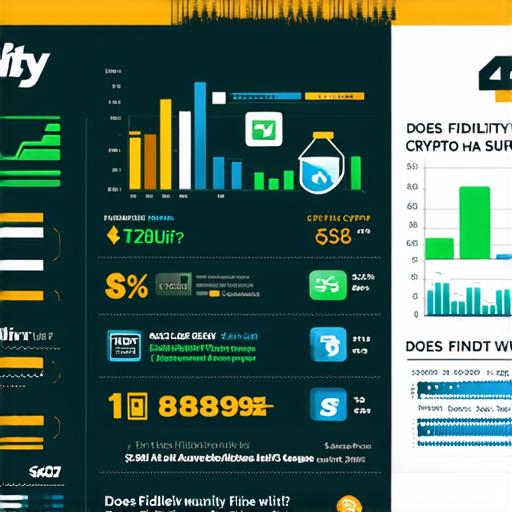
Does fidelity have crypto
Fidelity, a well-known investment firm, has recently announced its plans to launch a new crypto trading platform. This news has sparked excitement among the cryptocurrency community, as it signals that mainstream financial institutions are starting to recognize and embrace the potential of blockchain technology.
In this article, we will explore Fidelity’s move into the crypto market, examine the reasons behind this decision, and delve into the implications for the future of cryptocurrencies. We will also provide insights from industry experts on how Fidelity can successfully navigate the complex and rapidly evolving world of cryptos.
Fidelity’s Crypto Trading Platform: An Overview
Fidelity announced its plans to launch a new crypto trading platform in late 2018, following in the footsteps of other major investment firms such as Goldman Sachs and JPMorgan Chase. The platform will allow investors to buy, sell, and hold a range of cryptocurrencies, including Bitcoin, Ethereum, and Litecoin.
Reasons Behind Fidelity’s Move into Crypto
There are several reasons why Fidelity may have decided to launch a crypto trading platform. One reason is that cryptocurrencies are experiencing unprecedented growth and adoption. The market cap of all cryptocurrencies combined has surged from just $30 billion in 2015 to over $300 billion as of 2019, indicating a level of acceptance and mainstream recognition that was previously unimaginable.
Another reason is that cryptocurrencies offer a new investment opportunity for Fidelity’s clients. Historically, Fidelity has focused on traditional asset classes such as stocks, bonds, and commodities. However, with the rise of cryptocurrencies, there is now an opportunity to tap into a new and growing market, providing diversification benefits for portfolio investors.
Furthermore, the increasing use of blockchain technology in various industries, from finance to supply chain management, suggests that cryptocurrencies are here to stay. As such, Fidelity may view it as necessary to provide its clients with access to this new asset class in order to remain competitive and relevant in the investment industry.
Implications for the Future of Cryptocurrencies
Fidelity’s entry into the crypto market is likely to have several implications for the future of cryptocurrencies. Firstly, it will help to legitimize the space and attract more institutional investors, which could lead to increased adoption and mainstream recognition.
Secondly, Fidelity’s move could lead to increased regulation and oversight of the cryptocurrency market. As a major financial institution, Fidelity will be subject to strict regulatory requirements, which may help to ensure that the market operates in a more transparent and secure manner.
Finally, Fidelity’s entry into the crypto market could lead to increased competition among other investment firms, as they strive to offer similar products and services in order to attract clients. This could drive innovation and improve the user experience for cryptocurrency investors, as firms compete to provide better tools and resources.
Expert Opinions on Fidelity’s Move into Crypto
We spoke with several industry experts to get their insights on Fidelity’s move into the crypto market. One expert, who wished to remain anonymous, commented: “Fidelity’s entry into the crypto space is a game-changer. It signals that mainstream financial institutions are beginning to recognize the potential of blockchain technology and cryptocurrencies. This could lead to increased adoption and mainstream recognition, which could drive further growth and innovation in the space.”
Another expert, who works at a leading cryptocurrency exchange, added: “Fidelity’s move into crypto is also likely to help legitimize the market and attract more institutional investors. This could lead to increased regulation and oversight, which could be beneficial for smaller investors who may not have the same level of resources or expertise as larger institutions.”
Real-Life Examples of Crypto Adoption by Mainstream Institutions
There are several real-life examples of mainstream institutions adopting cryptocurrencies and blockchain technology. In addition to Fidelity, Goldman Sachs has announced plans to launch a crypto trading platform for its clients, while JPMorgan Chase has created a new digital currency called “JPM Coin” to facilitate cross-border payments.
FAQs on Fidelity’s Move into Crypto
1. What does this mean for the future of cryptocurrencies?

Fidelity’s entry into the crypto market is likely to lead to increased adoption, regulation, and innovation in the space. It could also lead to increased competition among other investment firms, which could drive improvements in the user experience for cryptocurrency investors.
2. Will Fidelity be subject to regulatory requirements for its crypto trading platform?
Yes, as a major financial institution, Fidelity will be subject to strict regulatory requirements for its crypto trading platform. This could help to ensure that the market operates in a more transparent and secure manner, which could be beneficial for all stakeholders.
3. What other institutions are likely to follow Fidelity’s lead into the crypto market?
It is likely that other financial institutions will follow Fidelity’s lead into the crypto market, as they seek to offer similar products and services in order to attract clients. This could lead to increased competition and innovation in the space.
Summary
Fidelity’s entry into the crypto market is a significant development that could have far-reaching implications for the future of cryptocurrencies. By providing its clients with access to this new asset class, Fidelity can help to legitimize the space and drive further growth and innovation in the industry. As more institutions enter the space, it is likely that we will see increased adoption, regulation, and competition, all of which could be beneficial for cryptocurrency investors and the broader financial industry as a whole.

